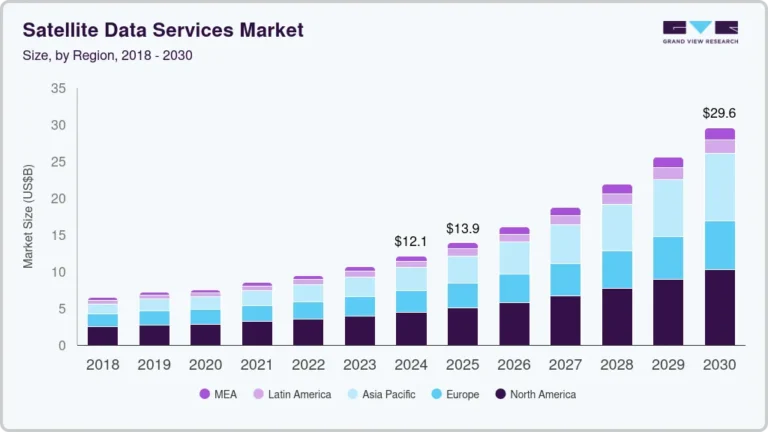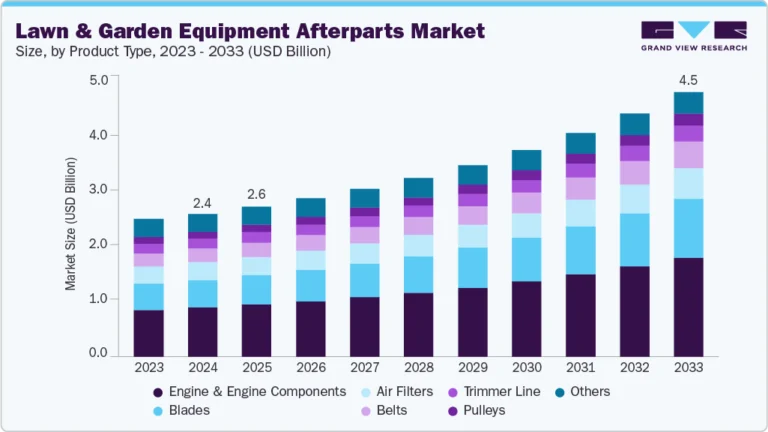Mobile Crane Market Size, Share & Trends Analysis growing rate (CAGR) of 6.7% from 2023 to 2030

The global mobile crane market size was valued at USD 13.40 billion in 2022 and is anticipated to grow at a compound annual growth rate (CAGR) of 6.7% from 2023 to 2030. Mobile cranes are crucial for construction projects as they help in moving components and materials within the construction site, as well as between offsite facilities and the construction site. The continued urbanization and subsequent initiatives being pursued toward developing new infrastructure and upgrading the existing infrastructure are expected to drive the demand for these equipment over the forecast period. Advances in technology, continued innovations, and a strong emphasis on automation and machine safety bode well for the industry’s growth. Most innovations are aimed at developing customized solutions for these types of equipment.
Request a free sample copy or view report summary: https://www.grandviewresearch.com/industry-analysis/mobile-cranes-market/request/rs1
With the integration of the latest technologies, the modern equipment is offering innovative features, such as GPS tracking, fleet management, and telematics solutions. For instance, Terex Corporation’s products are offered with the IC-1 Plus control system, which helps operators calculate the lifting capacity for each position of the boom. Thus, the integration of advanced systems, such as telematics, is anticipated to fuel the growth of the market.
The growth of the market is also anticipated to create significant opportunities for OEMs. Customers prefer renting as it allows them to save on the costs associated with the procurement and maintenance of new equipment. Renting equipment also greatly reduces overall project costs. The growing preference for renting equipment is opening up opportunities for manufacturers to collaborate with rental equipment companies as part of efforts to augment their sales.
On the other hand, rental companies are focusing on procuring new equipment and expanding their fleet size to cater to the rising demand for rental products. The growing demand for new equipment from rental companies is expected to drive the growth of the mobile cranes industry over the forecast period.
However, high procurement and operating costs associated with mobile cranes, changing customer requirements, and varying compliance and specification requirements across regions are some factors expected to restrain market growth. As the application portfolio of mobile cranes continues to widen, their specifications are also changing rapidly. As such, a standard mobile crane can no longer cater to diverse customer needs. Product specifications can also change according to the region. A mobile crane that suits the European market may not be suitable for the North American market.
Cranes are crucial for construction projects as they help in moving components and materials within the construction site as well as between offsite facilities and the construction site. Construction companies prefer prefabricating different construction blocks offsite and transporting the readymade blocks to the construction site for assembly as part of their efforts to save time and avoid traffic congestion and onsite accidents.
Mobile cranes boast high weight-lifting capacities and facilitate convenient material handling; as a result, they are used to transfer prefabricated construction blocks from offsite facilities to construction sites. Thus, most of the production equipment on construction sites is being gradually replaced by transportation equipment, such as mobile cranes. A large number of construction projects that are underway in different parts of the world are driving the demand for mobile cranes.
Initiatives being pursued for upgrading the existing infrastructure are also expanding the market for mobile cranes. Several projects involving the refurbishment of existing infrastructure are underway across the globe. For instance, China is currently upgrading the infrastructure of the Beijing International Airport. The expansion of the international airport is scheduled for completion by 2025. Asia Pacific countries, such as India, China, and Indonesia, are strongly focusing on infrastructure development to cope with the growing population. These countries are investing aggressively in projects to build hospitals, schools, houses, government buildings, and airports, among others.
For instance, in India, the government is expected to invest INR 50 trillion to improve the country’s infrastructure. Similarly, in China, the government is pursuing the “One Belt, One Road” initiative, which envisages developing infrastructure, including highways, railways, roads, and bridges, between India, China, Pakistan, and Europe. All such ongoing and proposed infrastructural construction activities and investments in infrastructure development bode well for the strong growth of the mobile crane market.
Advances in technology, coupled with a strong emphasis on automation and machine safety, bode well for market expansion. Innovations are aimed at developing customized solutions for mobile cranes. With the integration of the latest technologies, modern mobile cranes are offering innovative features, such as GPS tracking and fleet management & telematics solutions, which is expected to advance market growth through the forecast period.
Application Insights
The construction segment held the largest revenue share of 52.2% in 2022 in the mobile cranes market. Continued residential and commercial infrastructure projects across the globe are expected to support the growth of the segment. Tower cranes, once installed, can only be moved once the project is completed. Hence, builders working on numerous projects usually prefer mobile cranes as they are easy to move. Deployment of mobile cranes can also reduce the idle time of the equipment and subsequently enhance productivity.






